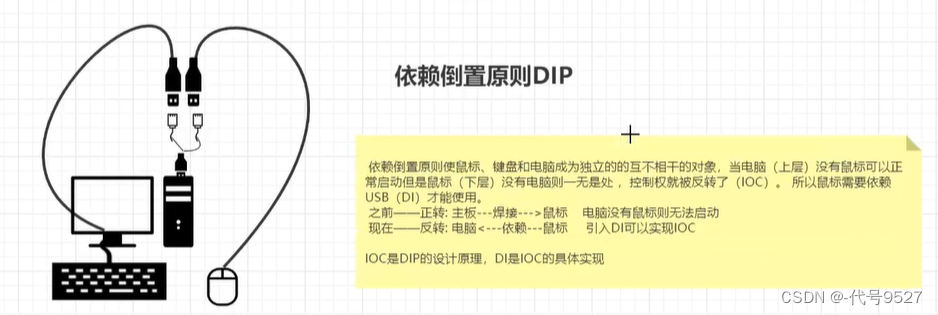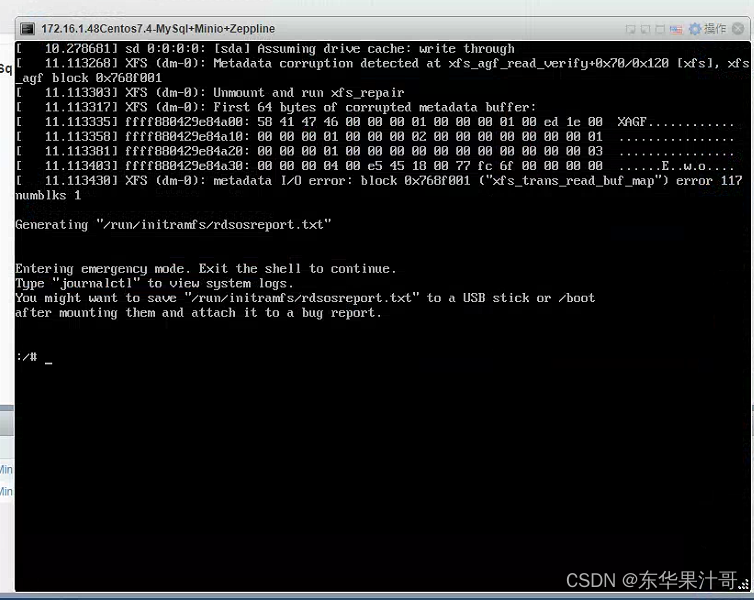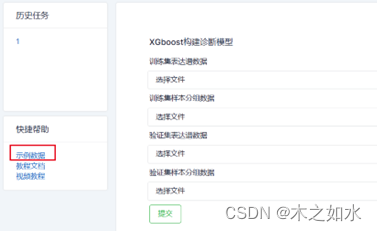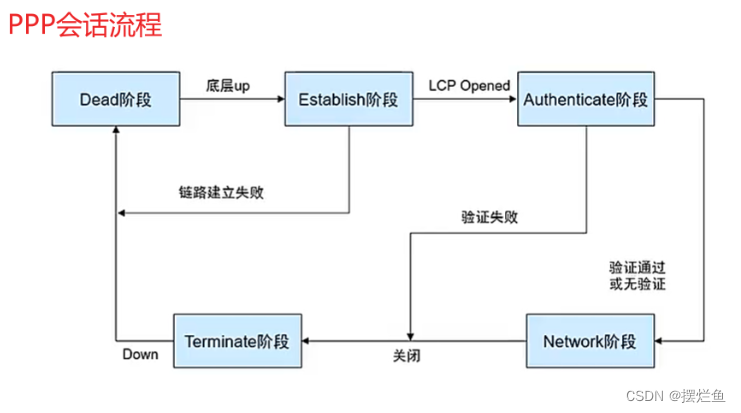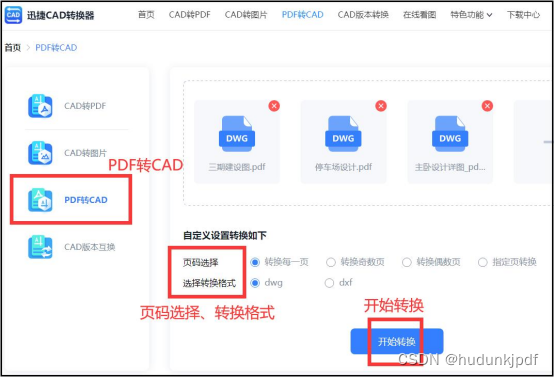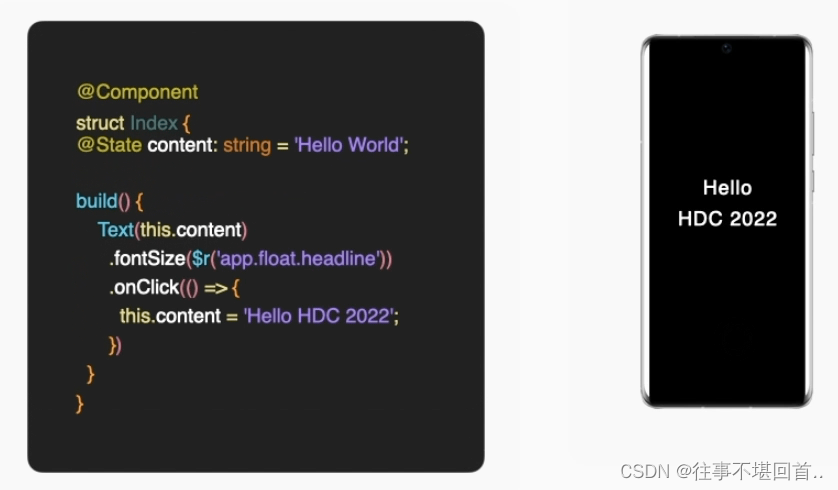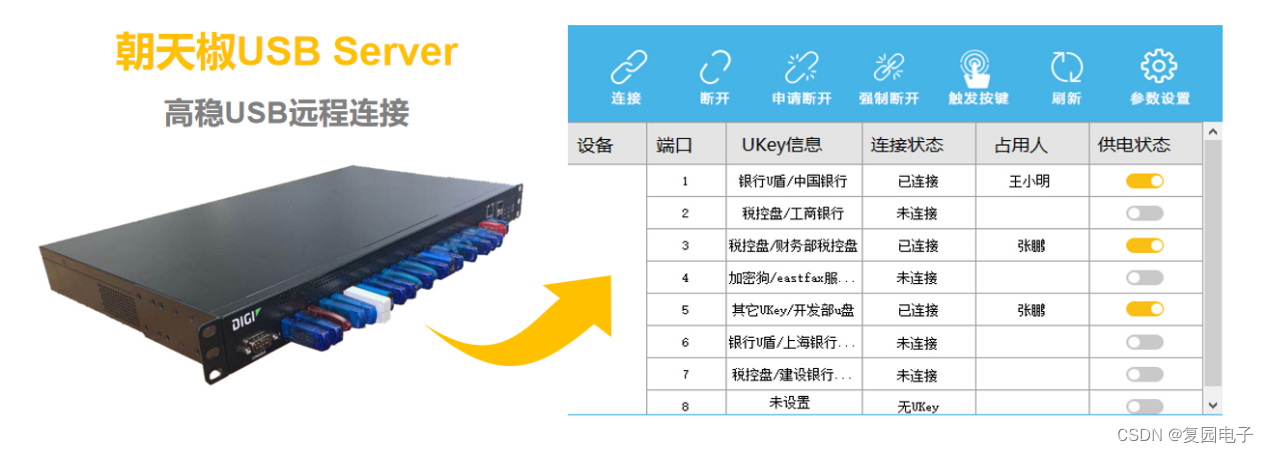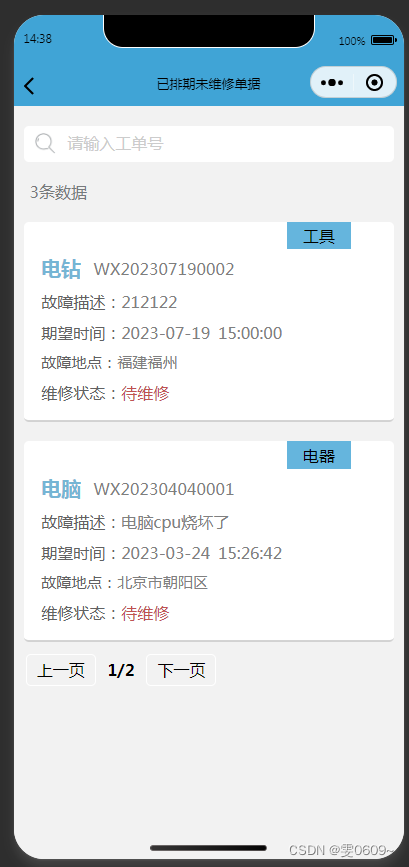文章目录
- LeetCode20. 有效的括号
- LeetCode225. 用队列实现栈
- LeetCode232. 用栈实现队列
- LeetCode622. 设计循环队列
LeetCode20. 有效的括号
题目
给定一个只包括
'(',')','{','}','[',']'的字符串 s ,判断字符串是否有效。
要求
有效字符串需满足:
左括号必须用相同类型的右括号闭合。
左括号必须以正确的顺序闭合。
每个右括号都有一个对应的相同类型的左括号。
思路
用栈实现
- 如果是左括号, 直接将左括号入栈
- 如果是右括号, 如果此时栈为空, 返回
false; 将栈顶元素弹出栈, 如果栈顶元素不是对应的左括号, 返回false; 如果栈顶元素是对应左括号, 出栈- 遍历完字符串, 判断此时栈是否为空. 为空返回
true; 不为空返回false
代码实现
#define N 10000
bool isValid(char * s)
{
char stack[N] = {0,}; //创建栈数组
int top = 0; //top指向栈顶元素的后一个空间
char topVal = 0; //用来存放栈顶元素
while (*s)
{
//如果是左括号
if (*s == '{' || *s == '(' || *s == '[')
{
//入栈
stack[top] = *s;
top++;
}
//如果是右括号
else
{
//如果此时栈为空, 直接返回false
if (top == 0)
{
return false;
}
topVal = stack[top - 1]; //得到栈顶元素
top--; //栈顶元素出栈
//如果右括号不是其对应的左括号, 直接返回false
if ((*s == ']' && topVal != '[')
|| (*s == ')' && topVal != '(')
|| (*s == '}' && topVal != '{'))
{
return false;
}
}
s++;
}
//如果遍历完字符串, 栈仍为空, 则返回true
if (top == 0)
return true;
else
return false;
}
LeetCode225. 用队列实现栈
题目
请你仅使用两个队列实现一个后入先出(LIFO)的栈,并支持普通栈的全部四种操作(push、top、pop 和 empty)。
OJ链接
要求
实现
MyStack类:
void push(int x)将元素 x 压入栈顶。
int pop()移除并返回栈顶元素。
int top()返回栈顶元素。
boolean empty()如果栈是空的,返回true;否则,返回false。
思路
- 使用两个队列,一个队列
no_empty_que存放已经存放的元素,另一个队列empty_que常空- 当要压栈的时候,将元素压入
no_empty_que- 当要出栈的时候,将
no_empty_que中除队尾元素全部存入empty_que,将队尾元素移出
实例
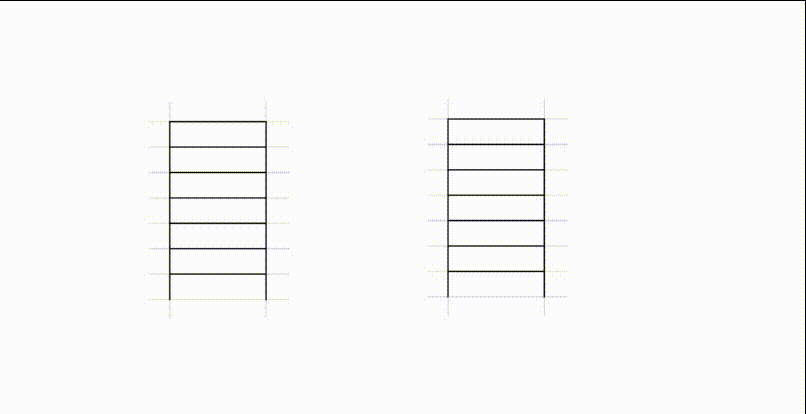
代码实现
typedef int QDataType;
// 链式结构表示队列
typedef struct QListNode
{
struct QListNode* next;
QDataType data;
}QNode;
// 队列的结构
typedef struct Queue
{
QNode* front; //指向队列头
QNode* rear; //指向队列尾
int size; //记录队列的元素个数
}Queue;
// 初始化队列
void QueueInit(Queue* q)
{
assert(q); //确保q合法
q->front = q->rear = NULL; //将头和为置为 NULL
q->size = 0;
}
// 判断队列是否为空, 如果为空返回非0, 非空返回0
int QueueEmpty(Queue* q)
{
assert(q); //确保q合法
if (q->size == 0)
{
return 1;
}
else
{
return 0;
}
}
// 队尾入队列
void QueuePush(Queue* q, QDataType x)
{
assert(q); //确保q合法
//创建新结点
QNode* newNode = (QNode*)malloc(sizeof(QNode));
newNode->data = x;
newNode->next = NULL;
//入队列
if (QueueEmpty(q))
{
//如果队列为空,直接赋值
q->front = q->rear = newNode;
}
else
{
//如果队列不为空,直接尾插
q->rear->next = newNode;
q->rear = newNode;
}
q->size++;
}
// 队头出队列
void QueuePop(Queue* q)
{
assert(q); //确保q合法
assert(!QueueEmpty(q)); //确保队列不为空
if (q->size == 1)
{
//如果只有一个元素,头删的同时还要将尾指针置空
free(q->front);
q->front = q->rear = NULL;
}
else
{
//如果不止一个元素,则只头删
QNode* nextNode = q->front->next;
free(q->front);
q->front = nextNode;
}
q->size--;
}
// 获取头部元素
QDataType QueueFront(Queue* q)
{
assert(q); //确保q合法
assert(!QueueEmpty(q)); //确保队列不为空
return q->front->data;
}
// 获取尾部元素
QDataType QueueBack(Queue* q)
{
assert(q); //确保q合法
assert(!QueueEmpty(q)); //确保队列不为空
return q->rear->data;
}
// 获取队列元素个数
int QueueSize(Queue* q)
{
assert(q); //确保q合法
return q->size;
}
// 销毁队列
void QueueDestroy(Queue* q)
{
assert(q);
while(!QueueEmpty(q))
{
QNode* nextNode = q->front->next;
free(q->front);
q->front = nextNode;
}
q->front = q->rear = NULL;
q->size = 0;
}
//用两个队列构成一个栈
typedef struct
{
Queue queue1;
Queue queue2;
} MyStack;
MyStack* myStackCreate()
{
MyStack* pst = (MyStack*)malloc(sizeof(MyStack));
QueueInit(&pst->queue1);
QueueInit(&pst->queue2);
return pst;
}
void myStackPush(MyStack* obj, int x)
{
if (!QueueEmpty(&obj->queue1))
{
QueuePush(&obj->queue1, x);
}
else
{
QueuePush(&obj->queue2, x);
}
}
int myStackPop(MyStack* obj)
{
Queue* no_empty_que = &obj->queue1;
Queue* empty_que = &obj->queue2;
if (!QueueEmpty(&obj->queue2))
{
no_empty_que = &obj->queue2;
empty_que = &obj->queue1;
}
//弹出有元素的队列直至只剩一个元素
while (QueueSize(no_empty_que) > 1)
{
QueuePush(empty_que, QueueFront(no_empty_que));
QueuePop(no_empty_que);
}
int pop = QueueFront(no_empty_que);
QueuePop(no_empty_que);
return pop;
}
int myStackTop(MyStack* obj)
{
if (!QueueEmpty(&obj->queue1))
{
return QueueBack(&obj->queue1);
}
else
{
return QueueBack(&obj->queue2);
}
}
bool myStackEmpty(MyStack* obj)
{
return QueueEmpty(&obj->queue1) && QueueEmpty(&obj->queue2);
}
void myStackFree(MyStack* obj)
{
QueueInit(&obj->queue1);
QueueInit(&obj->queue2);
free(obj);
}
LeetCode232. 用栈实现队列
题目
你仅使用两个栈实现先入先出队列。队列应当支持一般队列支持的所有操作(push、pop、peek、empty):OJ链接
要求
实现
MyQueue类:
void push(int x)将元素 x 推到队列的末尾
int pop()从队列的开头移除并返回元素
int peek()返回队列开头的元素
boolean empty()如果队列为空,返回 true ;否则,返回 false
思路
- 使用两个栈,一个专门负责压入数据
push_stack,另一个专门负责弹出数据pop_stack- 当push数据,直接将数据压入
push_stack- 当pop数据,如果
pop_stack为空,先将push_stack中的数据压入,pop_stack,再接将pop_stack的栈顶弹出
实例
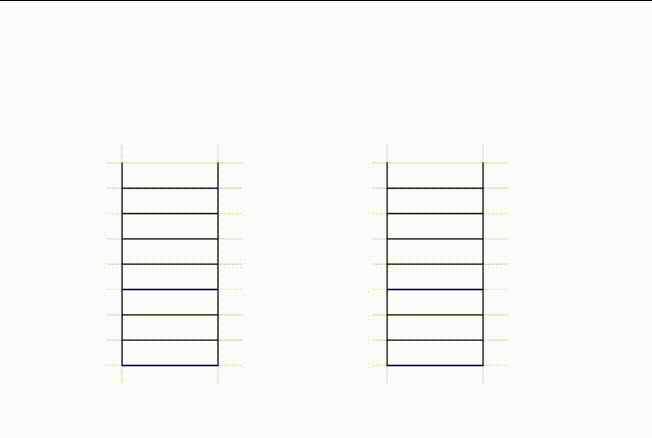
代码实现
typedef int STDataType;
typedef struct Stack
{
STDataType* a; //指向栈空间
int top; //栈顶
int capacity; //容量
}Stack;
// 初始化栈
void StackInit(Stack* ps)
{
assert(ps);
ps->a = NULL;
ps->top = 0;
ps->capacity = 0;
}
//入栈
void StackPush(Stack* ps, STDataType data)
{
assert(ps); //确保ps合法
//如果容量不够则扩容
if (ps->capacity == ps->top)
{
int newCapacity = ps->capacity == 0 ? 4 : 2 * ps->capacity; //定义新的容量
STDataType* tmp = (STDataType*)realloc(ps->a, sizeof(STDataType) * newCapacity); //开辟新的空间
if (tmp == NULL)
{
perror("malloc error");
exit(-1);
}
else
{
ps->a = tmp;
ps->capacity = newCapacity;
}
}
//将数据入栈
ps->a[ps->top] = data;
ps->top++;
}
// 出栈
void StackPop(Stack* ps)
{
assert(ps); //确保ps合法
assert(!StackEmpty(ps)); //确保栈不为空
ps->top--;
}
// 检测栈是否为空, 如果为空返回非零结果, 如果不为空返回 0
int StackEmpty(Stack* ps)
{
assert(ps); //确保ps合法
if (ps->top > 0)
{
return 0;
}
else
{
return 1;
}
}
// 获取栈顶元素
STDataType StackTop(Stack* ps)
{
assert(ps); //确保ps合法
assert(!StackEmpty(ps)); //确保栈不为空
return ps->a[ps->top - 1];
}
// 获取栈中有效元素个数
int StackSize(Stack* ps)
{
assert(ps); //确保ps合法
return ps->top;
}
// 销毁栈
void StackDestroy(Stack* ps)
{
assert(ps); //确保ps合法
free(ps->a);
ps->a = NULL;
ps->capacity = 0;
ps->top = 0;
}
typedef struct
{
Stack push_stack;
Stack pop_stack;
} MyQueue;
MyQueue* myQueueCreate()
{
MyQueue* que = (MyQueue*)malloc(sizeof(MyQueue));
StackInit(&que->push_stack);
StackInit(&que->pop_stack);
return que;
}
void myQueuePush(MyQueue* obj, int x)
{
StackPush(&obj->push_stack, x);
}
int myQueuePop(MyQueue* obj)
{
int pop = myQueuePeek(obj);
StackPop(&obj->pop_stack);
return pop;
}
int myQueuePeek(MyQueue* obj)
{
//如果pop_stack是空的话,将push_stack的所有元素入pop_stack
if (StackEmpty(&obj->pop_stack))
{
while (!StackEmpty(&obj->push_stack))
{
StackPush(&obj->pop_stack, StackTop(&obj->push_stack));
StackPop(&obj->push_stack);
}
}
//如果pop_stack不是空,直接取栈顶元素
int peek = StackTop(&obj->pop_stack);
return peek;
}
bool myQueueEmpty(MyQueue* obj)
{
return StackEmpty(&obj->push_stack) && StackEmpty(&obj->pop_stack);
}
void myQueueFree(MyQueue* obj)
{
StackDestroy(&obj->push_stack);
StackDestroy(&obj->pop_stack);
free(obj);
}
LeetCode622. 设计循环队列
题目
设计你的循环队列实现。 循环队列是一种线性数据结构,其操作表现基于 FIFO(先进先出)原则并且队尾被连接在队首之后以形成一个循环。它也被称为“环形缓冲器”。
循环队列的一个好处是我们可以利用这个队列之前用过的空间。在一个普通队列里,一旦一个队列满了,我们就不能插入下一个元素,即使在队列前面仍有空间。但是使用循环队列,我们能使用这些空间去存储新的值。OJ链接
要求
你的实现应该支持如下操作:
MyCircularQueue(k): 构造器,设置队列长度为 k 。
Front: 从队首获取元素。如果队列为空,返回 -1 。
Rear: 获取队尾元素。如果队列为空,返回 -1 。
enQueue(value): 向循环队列插入一个元素。如果成功插入则返回真。
deQueue(): 从循环队列中删除一个元素。如果成功删除则返回真。
isEmpty(): 检查循环队列是否为空。
isFull(): 检查循环队列是否已满。
思路
- 为了确保方便判断空和满情况,将循环队列的空间比设定长度加1
- 入队列和出队列相关
front和rear不是简单的加一或减一rear指向队尾下一个空间,front指向队头元素
代码实现
typedef struct
{
int* a; //存放队列元素
int front; //指向队头元素
int rear; //指向队尾下一个元素
int k; //循环队列的大小
} MyCircularQueue;
MyCircularQueue* myCircularQueueCreate(int k)
{
MyCircularQueue* cq = (MyCircularQueue*)malloc(sizeof(MyCircularQueue));
cq->a = (int*)malloc(sizeof(int) * (k + 1));
cq->front = cq->rear = 0;
cq->k = k;
return cq;
}
bool myCircularQueueIsEmpty(MyCircularQueue* obj)
{
return obj->front == obj->rear;
}
bool myCircularQueueIsFull(MyCircularQueue* obj)
{
return (obj->rear + 1) % (obj->k + 1) == obj->front;
}
bool myCircularQueueEnQueue(MyCircularQueue* obj, int value)
{
//如果满了,插入失败
if (myCircularQueueIsFull(obj))
{
return false;
}
//如果不满,进行插入,注意rear的大小
obj->a[obj->rear] = value;
obj->rear = (obj->rear + 1) % (obj->k + 1);
return true;
}
bool myCircularQueueDeQueue(MyCircularQueue* obj)
{
//如果没有元素,删除失败
if (myCircularQueueIsEmpty(obj))
{
return false;
}
//直接修改front的值即可
obj->front = (obj->front + 1) % (obj->k + 1);
return true;
}
int myCircularQueueFront(MyCircularQueue* obj)
{
if (myCircularQueueIsEmpty(obj))
{
return -1;
}
return obj->a[obj->front];
}
int myCircularQueueRear(MyCircularQueue* obj)
{
if (myCircularQueueIsEmpty(obj))
{
return -1;
}
return obj->a[(obj->rear + obj->k) % (obj->k + 1)];
}
void myCircularQueueFree(MyCircularQueue* obj)
{
free(obj->a);
free(obj);
}

![读书笔记-《ON JAVA 中文版》-摘要24[第二十一章 数组]](https://img-blog.csdnimg.cn/92ebc929391a45e3a83235d19596207a.png)
